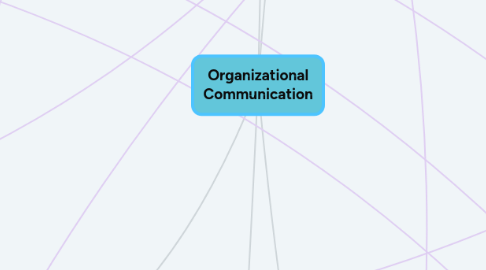
1. Relationships
1.1. Relationships
1.1.1. Social Exchange Theory
1.1.1.1. Criticism: too abstract/ambitious for a theory
1.2. Leadership
1.2.1. Leader-Member Exchange
1.2.1.1. Criticism: it is assumed that a good LMX relationship has a positive effect on work performance, but it is rarely tested.
1.2.2. Leadership Styles
1.2.2.1. Transactional
1.2.2.2. Transformational
1.2.2.2.1. Authentic
1.2.2.2.2. Ethical
1.2.2.2.3. Theory Y
1.2.2.3. Paternalism (Asia, Latin America)
1.2.2.3.1. Theory X
1.2.2.4. Servant
1.2.2.4.1. Theory Z
1.2.2.5. E-Leadership
1.2.3. Gaps: Effectiveness of leadership in different cultural contexts
1.2.4. Criticism: Leadership is more complex than a "simple style of" and having characteristics
1.3. Mentoring
1.3.1. The Mentoring Life Cycle
1.4. Socialization
1.4.1. Organizational Socialization
1.4.1.1. Socialization Tactics
1.4.2. Social Capital Model of the Organizational Socialization Process
2. Trust and Justice
2.1. Trust
2.1.1. 1. Interpersonal Trust
2.1.1.1. High-Level Model of Initial Formation of Trust
2.1.1.1.1. Personality-based Trust
2.1.1.1.2. Cognition-based trust
2.1.1.1.3. Institution-based trust
2.1.2. 2. Group trust
2.1.2.1. Theory of trust formation and group development
2.1.3. 3. Interorganizational Trust
2.1.3.1. 1. Ecomomic exchange theory
2.1.3.1.1. Criticism: States that firms behave opportunistically; "cross-level fallacy" - inaccurate!
2.1.3.2. 2. Relational exchange theory
2.1.3.2.1. Criticism: Only personal relations determine trust, not organizational context
2.1.3.3. 3. RECENT: Duality of Structure approach
2.1.3.4. Common Exploration of new techologies
2.1.3.5. Gap: Interorganizational trust in joint-ventures, across cultures, contextual antecendents of trust
2.1.4. Customer trust
2.1.4.1. Commitment-trust theory
2.1.4.1.1. Development: Investigation of offline environment to online environment
2.1.4.1.2. Gap: Traditional theory must be updated for online contexts
2.1.4.1.3. Gap: Use commitment-trust theory to investigate interorganizational trust
2.2. Justice
2.2.1. 1. Distributive justice
2.2.1.1. Equity theory
2.2.2. 2. Procedural justice
2.2.2.1. Conceptualisation of procedural justice
2.2.3. 3. Interactional justice
2.2.3.1. Social Exchange theory
2.2.3.2. Leader Member Exchange
2.2.4. Gap: Personal values influencing perceived justice
3. Reputation
3.1. Image
3.1.1. Analogues School & Differentiated School (Gotsi, 2001)
3.2. Reputation
3.2.1. Analogues School & Differentiated School (Gotsi, 2001)
3.2.2. Corporate reputation
3.2.3. Brand Management
3.3. Crisis
3.3.1. CSR
3.3.1.1. Effect on firm reputation
3.3.1.1.1. Stakeholder Theory
3.3.1.1.2. Attribution Theory
3.3.1.1.3. Value Theory
3.3.1.2. Organizational commitment/Employee satisfaction
3.3.1.3. Purchase intention
3.3.1.4. Investor loyalty
3.3.1.5. Motives
3.3.1.5.1. Address social concerns
3.3.1.5.2. Create a favorable image
3.3.1.5.3. Postive relation consumers & other stakeholders
3.3.1.5.4. Gap: Why do consumers respond different to same CSR strategy--> Decreasing of sales
3.3.2. Stakeholder Theory
3.3.3. Stakeholders
3.3.3.1. Integrated Crisis Mapping Model (Jin, Pang, & Cameron, 2012)
3.3.4. Threats
3.3.4.1. Social Media
3.3.4.1.1. PR/Marketing
3.3.4.1.2. Unpredictable
3.3.4.1.3. Networked Crisis Communication Model
3.3.4.1.4. Social Mediated Crisis Communication Model (Austin, Liu, & Jin, 2012)
3.3.4.2. Transparancy
3.3.4.3. Trust
3.3.4.4. Social media vs traditional media
3.3.5. Theory of Image Restoration (Benoit, 1995)
3.3.6. SCCT (Coombs, 1995)
3.3.6.1. Primary response strategies
3.3.6.2. Secondary response stratgeies
3.3.6.3. Gaps: Theory & Practice and doesn't consider the medium
4. Theory of Planned Behaviour
5. Identity
5.1. Social Identity Approach
5.1.1. Social Identity Theory
5.1.1.1. Criticism: Mostly experimental studies and high variability of measurement
5.1.1.2. Criticism: Identity not just a result of belonging to a group, also of the context
5.1.1.3. Gaps: Changing identities over time. Influence of role transitions
5.1.2. Self-Categorization Theory
5.1.2.1. In-group/Out-group
5.1.3. Development: Change in research focus due to changing organizations
5.2. Employee identity
5.2.1. Situated identity
5.2.2. Identity work
5.2.3. Similarity-distinctiveness paradox
5.2.4. IT identity
5.3. Team identity
5.3.1. Multiple team membership
5.3.1.1. Parallel identities
5.3.1.2. Virtual teams
5.3.1.2.1. Semi-virtual teams
5.3.1.2.2. Technical and interpersonal skills
5.3.1.3. Self-managing teams
5.3.2. Social category diversity
5.3.3. Informational diversity
5.4. Organizational identity
5.4.1. Partial definition of the self
5.4.2. Central, distinctive and enduring
5.4.3. Organizational change
5.4.4. Organizational image
5.4.5. Organizational commitment
6. ICT use in organizations
6.1. E-collobaration
6.1.1. Determinism
6.1.1.1. Technological determinism
6.1.1.1.1. Materialism theory
6.1.1.2. Social determinism
6.1.1.3. Socio-technical theory
6.1.1.3.1. Common language
6.1.1.3.2. Virtual Teams
6.1.1.3.3. Criticism: Duration research
6.1.1.3.4. Gap: Effects of videoconference on team interaction styles
6.2. E-leadership
6.2.1. Media Richness Theory
6.2.1.1. Text vs FtF media
6.2.1.2. Transactional vs Tranformational leadership
6.2.2. Leadership framework
6.2.2.1. Traditional vs E-leadership
6.2.2.2. E-leadership = proactive
6.2.2.3. Servant leadership
6.2.2.4. Expertise hierarchy
6.2.2.5. Criticism: E-leadership is more complex than having soms additional skills
6.2.3. (Adaptive) Structuration Theory
6.2.3.1. Communication style
6.2.3.1.1. Aggressive
6.2.3.1.2. Defensive
6.2.3.2. Structure
6.2.3.2.1. Duality of structure
6.2.3.2.2. Hierachy -> expertise hierachy
6.2.3.3. Micro -> Macro
6.2.3.4. Gap: Research mostly in laboratory setting
